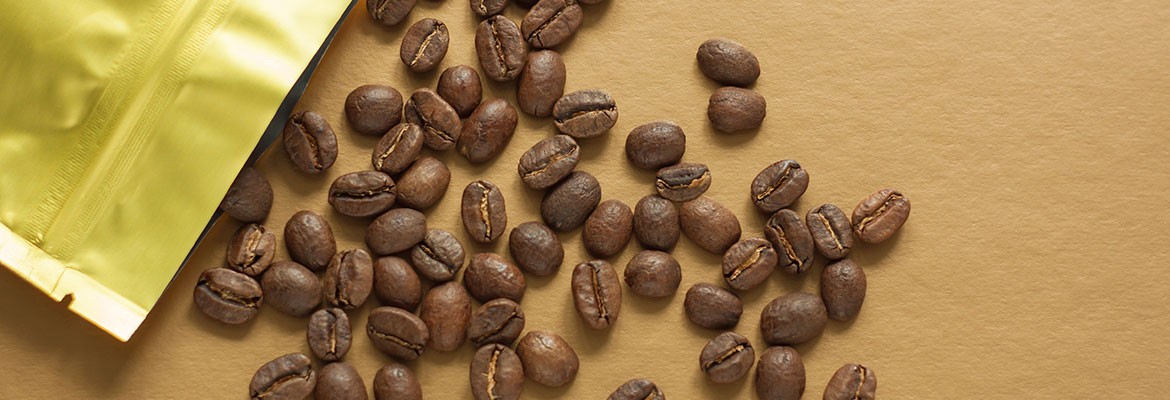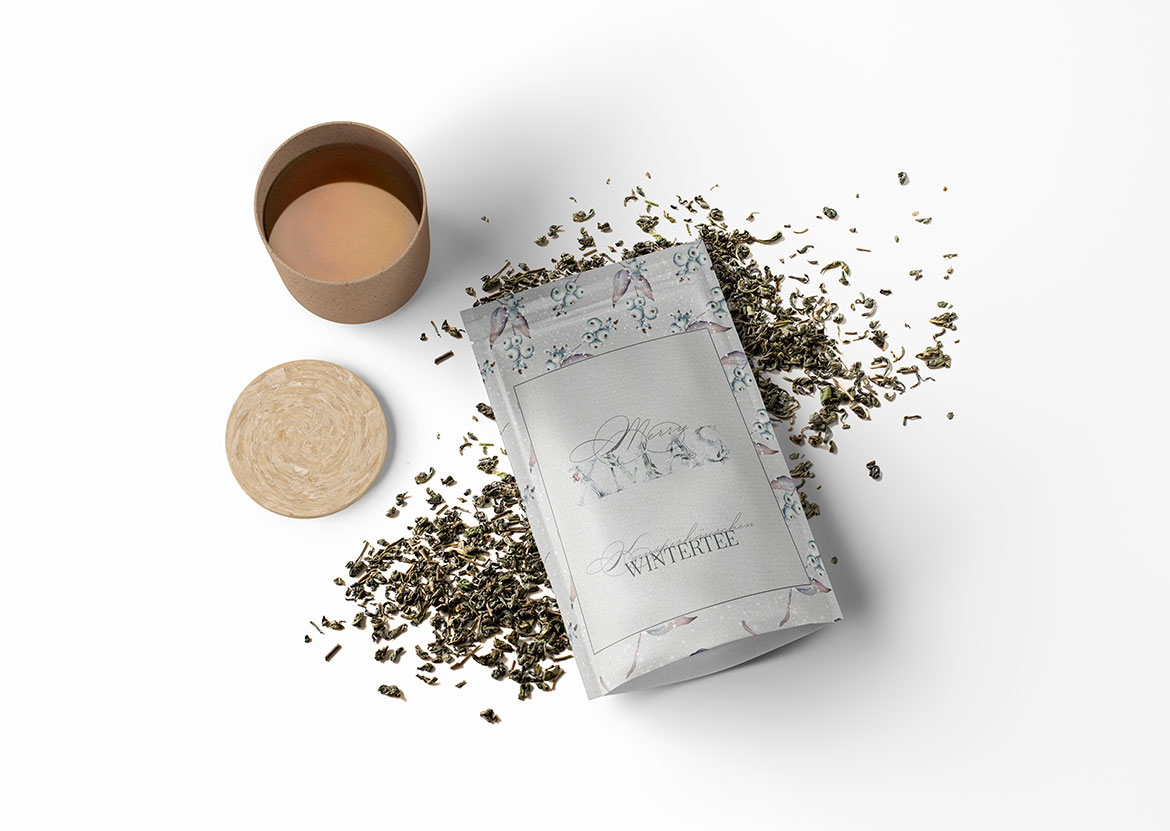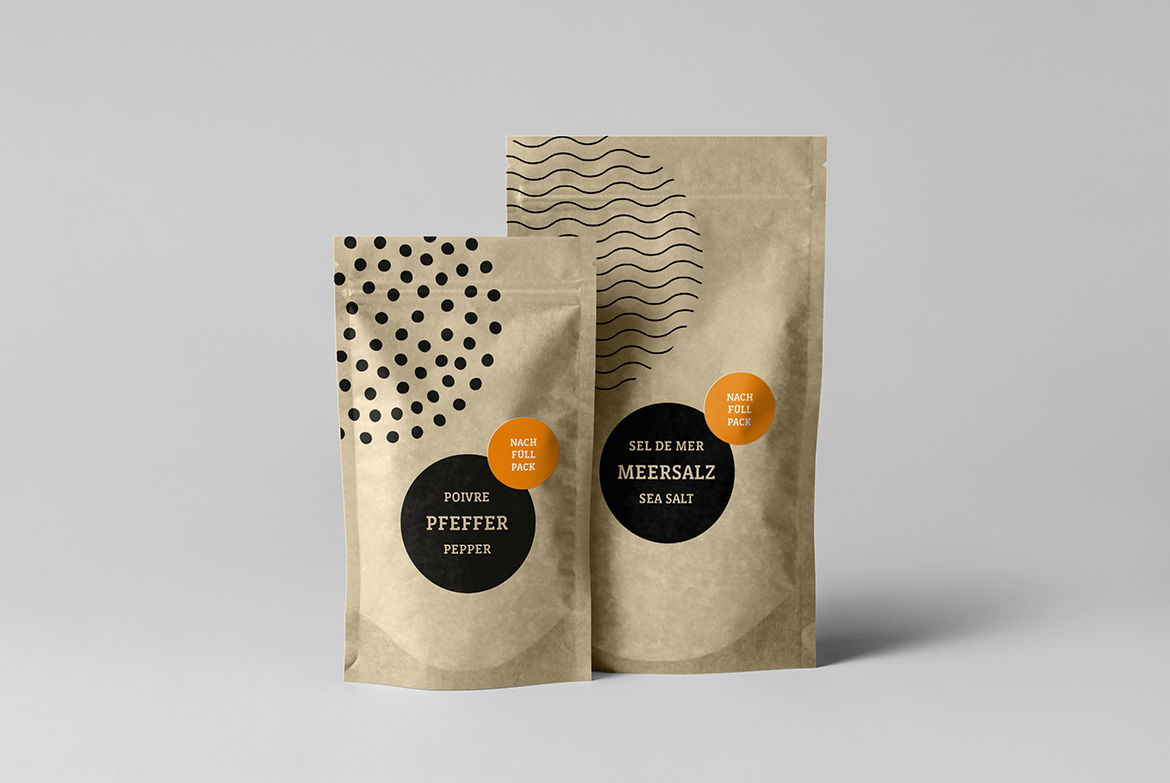
Tea, coffee and spices - sustainable labels for bag packaging
Well-designed labels on pouch packaging formally appeal to customers. But advertising messages alone are hardly able to do this - it is the overall picture that counts.
Critical shoppers want to see information about ingredients, environmentally conscious shoppers look for sustainable labels and other consumers are certainly interested in an appealing design and hints about the taste of the products. After all, labels build the first communication with customers.

Labels for pouch packaging - these details matter
Labels for pouch packaging should fulfil a very specific purpose - they should have an effect as small advertising ambassadors and information centres when shopping. Two essential components count here: the appearance and the content.
- Appearance: When it comes to appearance, the choice of colour perhaps plays the biggest role. However, labels that are too colourful quickly come across as playful or childish. This is rather counterproductive for the marketing of speciality coffees as well as high-quality teas or spices - a classy presentation can have a more convincing effect here. The same applies to your use of graphics and symbols.
The appropriate font also has an important influence on the appearance of the label. Bag packaging with a Chinese-inspired font is certainly well suited for Asian spices - but rather unusual for an Italian spice blend. Likewise, labelling in "Comic Sans" may generate a smile, but is likely to be unsuitable in sales. - Content: When it comes to the content of the label text, a balance is also important for pouch packaging. Information that encourages purchase and those that inform about legal obligations regarding ingredients, allergies, etc. should be equally considered.
The better the harmonisation of origin, nutritional values, taste and minimum shelf life, the easier it is for customers to absorb the information.
The content of the labels raises expectations that should also be fulfilled. An organic seal works better on a sustainable, environmentally friendly label than on a high-gloss finished sticker.
For organic and fair-trade products such as coffee, tea and spices, information about the growing region creates a mental link to the producers. References to the taste help in the selection of different products - the more comprehensible this information is, the stronger the trust in the company's products grows.
Label and pouch packaging - a harmonious couple
he very first time a potential customer looks at the printed packaging, a multitude of details are perceived - a great opportunity to achieve a positive first impression in a targeted manner. A successful combination of the right (standard) bag size and the matching label is just as possible as a freely selected, individual format.
Generally, for visual reasons, it is advisable to choose the label in a smaller format than the bag packaging of the coffee, tea or spices.
In addition, the matching of colours between label and pouch packaging is crucial. If the colours harmonise with each other, the feeling of value increases. If the colours do not match, the value of the product can quickly be called into question. High-contrast labelling makes important information quickly tangible and perceptible. On the other hand, low-contrast colour combinations help to push less useful information into the background.
Finally, there is the choice of label shape. Pouch packaging is usually rectangular, so oval labels or unique shapes can bring the message of the goods more into focus and make the product look better at the POS.

Sustainable labels - the big advantage
Environmental awareness and sustainability have long since left their niche existence as social issues. Successful companies are using this change in direction to create a greener image overall.
However, trendy terms such as " green ", " environmentally friendly ", " CO2-neutral " or " ecological " are also a challenge. Ecologically sensitive people check very carefully whether companies actually keep the advertised claims and promises.
Sustainable labels are recyclable or even compostable, come from renewable raw materials and have a low CO2 consumption during production. In addition, the vegan adhesives used are also sustainable.
Advances in materials research are providing environmentally friendly substitutes for sustainable labels - in more ways than one. There is now a selection of products made from natural raw materials. These include:
- Grass - fast growing and compostable
- Sugar cane - organic and recyclable
- Stone - finely ground and enriched with recycled polyethylene, recyclable
- Wood pulp - natural waste product, well compostable
Through these environmentally friendly alternatives for sustainable labels, the design for sustainable coffee, tea or spice varieties also benefits.
The suitable image
Many purchasing decisions take place in the subconscious and purely emotionally. This knowledge can be an element for successful acquisition of new customers. Emotional images can generate the attention of many people and visibly increase the success of advertising campaigns and products.
Whether it is purely organically grown coffee, fair-trade white tea made from hand-picked leaves or sustainably grown vanilla beans for Christmas biscuits - with images that convey emotions such as excitement, joy, relaxation or pleasure, potential customers can be excited and convinced about high-quality products. Natural images of green cultivation plantations emphasise sustainability. Detailed close-ups of spices, tea leaves or coffee beans stand for quality. On the other hand, pictures of a fragrant cup or freshly baked biscuits evoke a feeling of pleasure. Of course, the design elements mentioned should also always be related to the brand identity.
The label and packaging are your company's calling card
Whether the assortment of tea, coffee or spices has been selected with love and understanding and the taste has special nuances - customers cannot judge that at first glance. At this moment, the label is the brand ambassador that transports the corporate identity of the company.
The corporate identity is the self-image of every company. Besides the visual corporate design, the self-image also includes aspects of corporate culture and communication.
The brand message that emerges from the corporate identity follows a simple principle: the product and its packaging, starting from the beautiful folding box to the label itself, must convey a coherent image.
For ecologically grown specialities, labels made from renewable raw materials or from purely biologically produced plastics are suitable. The labels used underline the commitment to quality and sustainability. An attractive label design can thus convince in the online shop and also at the point of sale.
Honesty is in demand, especially when it comes to sustainability and environmental protection. Those who engage in greenwashing can lose the trust of their customers. With honesty and a holistic approach, committed companies combine the sustainability of products with the sustainability of packaging and labels.
Conclusion: A coherent overall image offers real added value
Whether for coffee, tea or spices - sustainable labels on pouch packaging are powerful ambassadors for corporate identity as well as for environmental commitment and can be a decisive competitive advantage. Made from grass, sugar cane, wood or stone, sustainable labels are easy to recycle and in many cases compostable - good for the environment and good for trust in the products.
FAQ
- Do the labels go on the bags before or after filling?
To ensure a smooth and secure application, we recommend that you always apply the labels before filling. This way the bag lies flat and the placement is successful, even if small quantities are applied. A film bag machine takes over this work step automatically before filling. - Labels with or without protective film (laminate)?
Since coffee, tea or spices are often stored and used by customers later in the kitchen, we recommend matt or glossy laminated labels as moisture protection. This way, the labels still look good even after repeated use. - What must be considered when selecting the label?
The labels you choose should adhere well to the bag you are using. There are adhesives that adhere particularly well to paper bags and others that are ideal for foil bags. You are free to choose the shape and colour of your labels.





